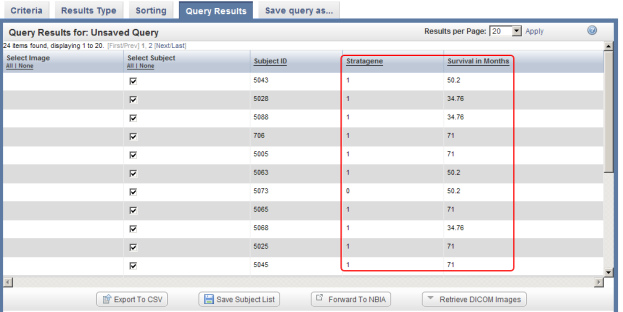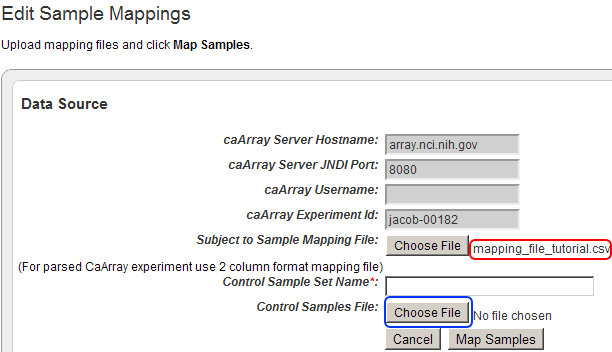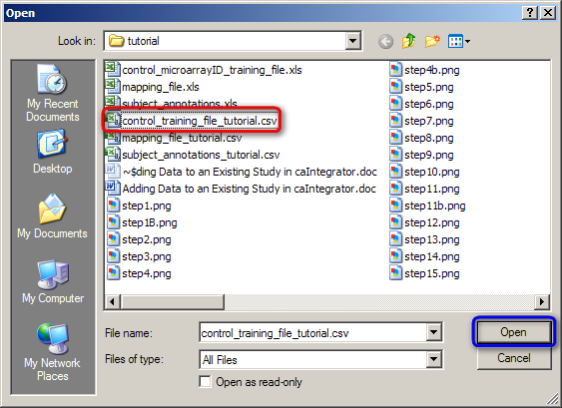 |
Page History
...
This guide shows how to add clinical annotation and genomic microarray data to an existing study in caIntegrator, with a focus on common obstacles and pitfalls that may arise in the process. . It assumes that you already have basic familiarity with the program and have already created a study containing at least one source for both clinical annotation and array data. It also assumes that you have additional sources available, namely:
...
- We can't query the study unless it's already been deployed. To check whether this is the case, scroll all the way down to the bottom of the 'Edit Study' page, where you'll see a row of three buttons. If the study has been deployed, as is the case in our example, the left button labeled 'Deploy Study' will be grayed out and you will not be able to click on it. If, however, the study hasn't been deployed, the button will appear normally, and you can click on it to deploy the study.
_The bottom of the 'Edit Study' page shows the 'Deploy Study' button (highlighted in red). In this example, the study has already been deployed so this button is grayed out. If your study hasn't yet been deployed, the button will appear normally, _ and you can click on it to deploy the study.
- Now that we've loaded our clinical data into the study, let's query it. To get started, click on the link 'Search Demo Study for ICR Folks' under the menu 'DEMO STUDY FOR ICR FOLKS' in the navigation panel to the left.
...
The updated query results include two additional columns (highlighted in red) which correspond to the two additional fields we selected in under the 'Results Type' tab.
...
The filename of the mapping file we just uploaded now appears next to the 'Choose File' button for labeled 'Subject to Sample Mapping File' (highlighted in red). Now click on the 'Choose File' button labelednext next to 'Control Samples File' (highlighted in blue) to begin uploading your control training file.
In the Open dialog that follows, find your mapping file, click on it, and then click on the 'Open' button. (In our example, the mapping file is named 'control_training_file_tutorial.CSV'.)
Click on the 'control_training_file_tutorial.CSV' file (highlighted in red), then click on the 'Open' button (highlighted in blue).
...
You may notice something unusual about this mappings: the same sample ID (191) is mapped twice, and each mapping is to a different subject ID (5085 in one case, 6000 to another). This is obviously an error in the mappings, as each sample is taken from a single subject and must be unique to that subject. However, the question remains, what happens when we attempt to load these mappings into the study?
SuprisinglySurprisingly, when we repeat the procedure for loading mappings with the 'duplicate_mapping_file_tutorial.CSV', caIntegrator does not display any error message, and its source's status shows as 'Ready to be loaded' in the 'Genomic Data Sources' table, as was the case with the previous mapping file we loaded successfully. Does this mean that caIntegrator allows multiple mappings of the same sample to different subjects?
...



